Discover effective and easy ways to clean your kitchen backsplash with our comprehensive guide. Keep your kitchen looking fresh and pristine with our expert tips!
Spring is here, and it’s time to give your kitchen the deep clean it deserves!
One area that often gets overlooked but can make a big impact on the overall cleanliness and appearance of your kitchen is the backsplash.
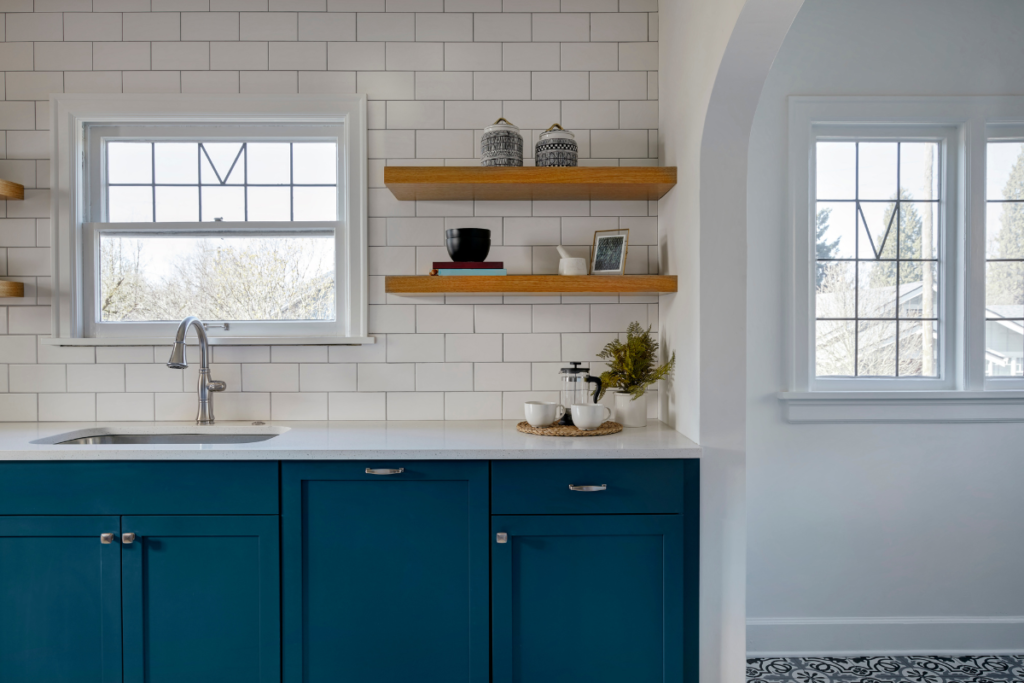
Whether it’s tiled, glass tiles, porcelain tile, ceramic tile or another material like natural stone tiles, keeping your kitchen backsplash clean is essential for maintaining a hygienic and inviting space.
Neglecting to clean the backsplash regularly allows dirt and unsightly stains to build up, making it more challenging to clean later on.
Cooking, especially frying and sautéing, can result in oil, a build-up of grease, and food particles splattering onto the surface of the backsplash. Over time, these splatters accumulate and form a layer of grime.
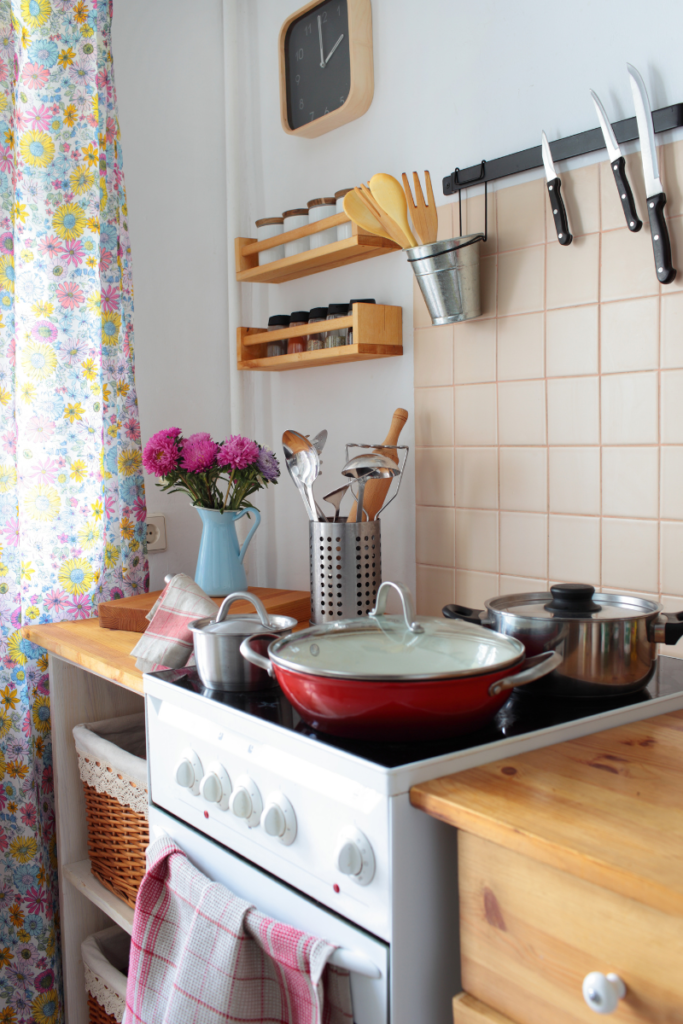
How to Clean Kitchen Backsplash
Cleaning kitchen backsplashes doesn’t have to be a daunting task when you make it apart of your household chores. With the right tools and techniques, you can effectively remove grease, grime, and food splatters to reveal a sparkling clean backsplash tile.
Here’s how:
Gather Your Supplies:
Before you begin, gather all the necessary cleaning supplies. This may include dish soap, warm water, a soft sponge or cloth, and a gentle household cleaner suitable for your backsplash material.
Prep the Surface:
Start by wiping down the backsplash with a damp cloth to remove any loose debris or surface dust. This will make the cleaning process more effective and prevent dirt from spreading around.
Scrub Gently:
Apply the cleaner to the backsplash surface and use a soft sponge or soft cloth to gently scrub away any stains or buildup. Avoid using abrasive scrubbers or harsh chemicals, as these can damage the surface of your backsplash.
Rinse and Dry:
Once you’ve cleaned the backsplash, rinse the area thoroughly with clean water to remove any leftover cleaner residue. Use a clean, dry cloth to wipe down the surface and remove excess moisture.
Maintain Regularly:
To keep your kitchen backsplash looking its best, incorporate regular cleaning into your kitchen maintenance routine. Wipe down the backsplash on a daily basis after cooking to prevent grease buildup and tackle stains as soon as they occur.
Choose the Right Cleaner:
Depending on the material of your backsplash, choose a cleaner that is safe and effective. For tiled backsplashes, a mixture of dish soap and warm water works well. For tougher stains, you may need a specialized cleaner or a solution of vinegar and water for natural stone surfaces.
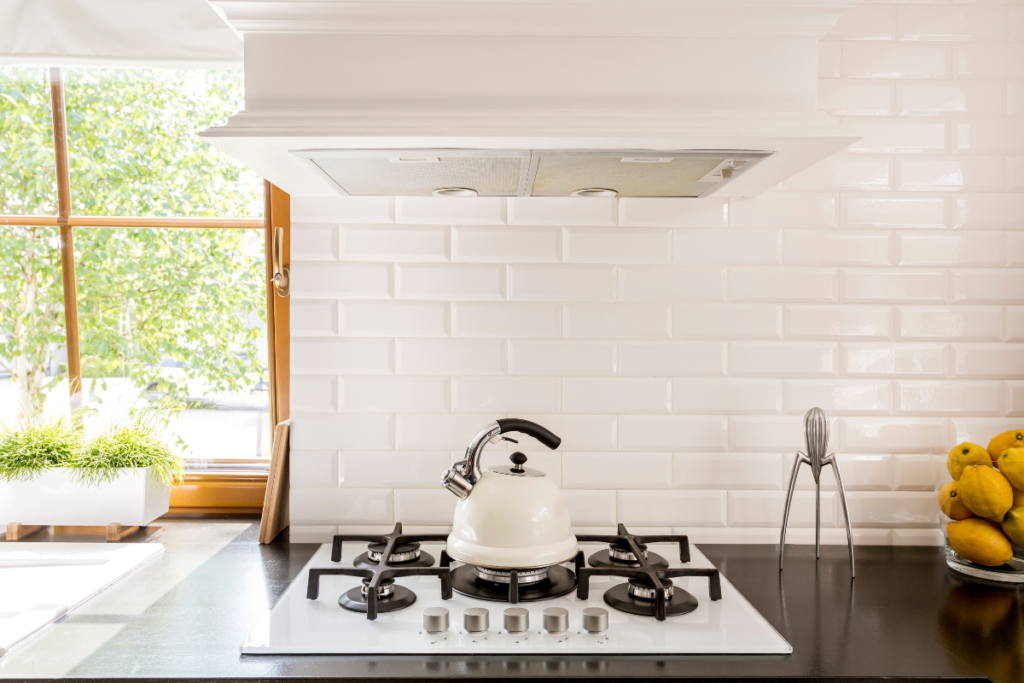
What is the best way to clean tile backsplash?
To clean your kitchen backsplash tiles effectively, you can use a few different methods depending on the level of dirt and grime present:
Warm Water and Dish Soap – For routine cleaning, mix warm water with a few drops of mild dish soap. Dip a soft sponge or cloth into the solution and gently scrub the tile surface. Rinse with clean water afterward to remove any soap residue.
Vinegar Solution – Vinegar is an excellent natural cleaner and can effectively remove grease and stains from tile backsplashes. Mix equal parts white vinegar and water in a spray bottle. Spray the solution onto the tiles and let it sit for a few minutes before wiping with a clean cloth or sponge. Rinse with water afterward.
Baking Soda Paste – For stubborn stains or grout discoloration, make a paste using baking soda and water. Apply the paste to the affected areas and let it sit for about 10-15 minutes. Scrub the area with a soft brush or sponge and rinse thoroughly with water.
Commercial Tile Cleaners – If you prefer using a commercial cleaner, look for a tile-specific cleaner that is safe for your type of tile. Follow the manufacturer’s instructions carefully and test the cleaner on a small, inconspicuous area first to ensure compatibility with your tiles.
Steam Cleaning – For a deep clean, consider using a steam cleaner specifically designed for tile surfaces. Steam can help loosen dirt and grime without the need for harsh chemicals. Follow the manufacturer’s instructions for safe and effective use.
Regardless of the method you choose, it’s essential to avoid using abrasive cleaners or scrubbers that can scratch the tile surface.
Additionally, always test any cleaning solution on an inconspicuous spot first to ensure it doesn’t cause damage or discoloration to your tiles. With regular maintenance and proper cleaning techniques, you can keep your tile backsplash looking clean and fresh for years to come.
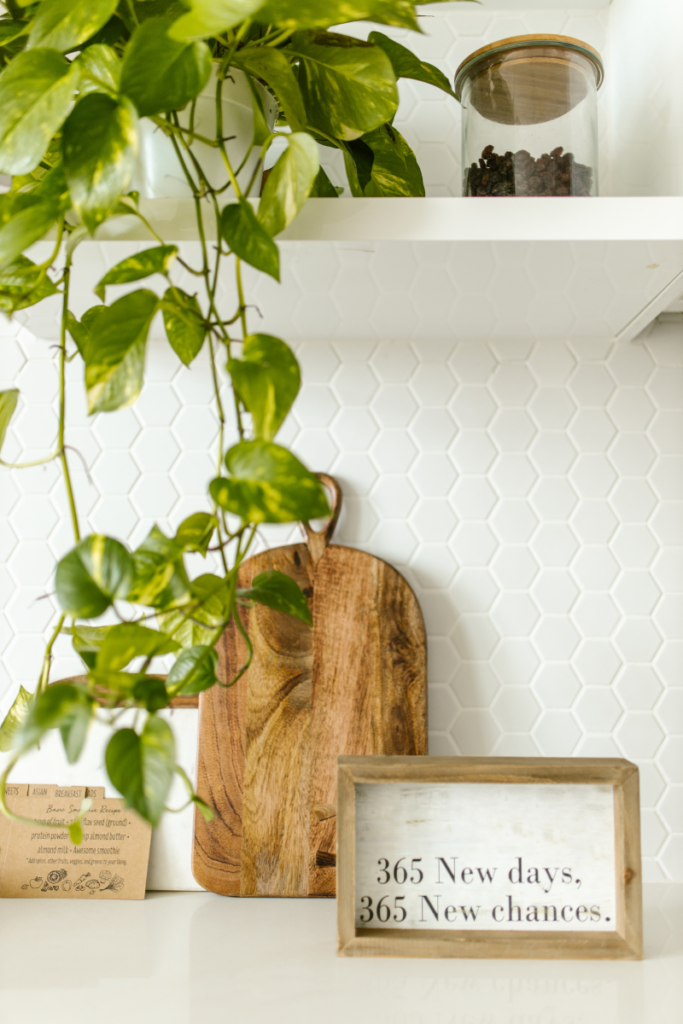
Relevant Posts:
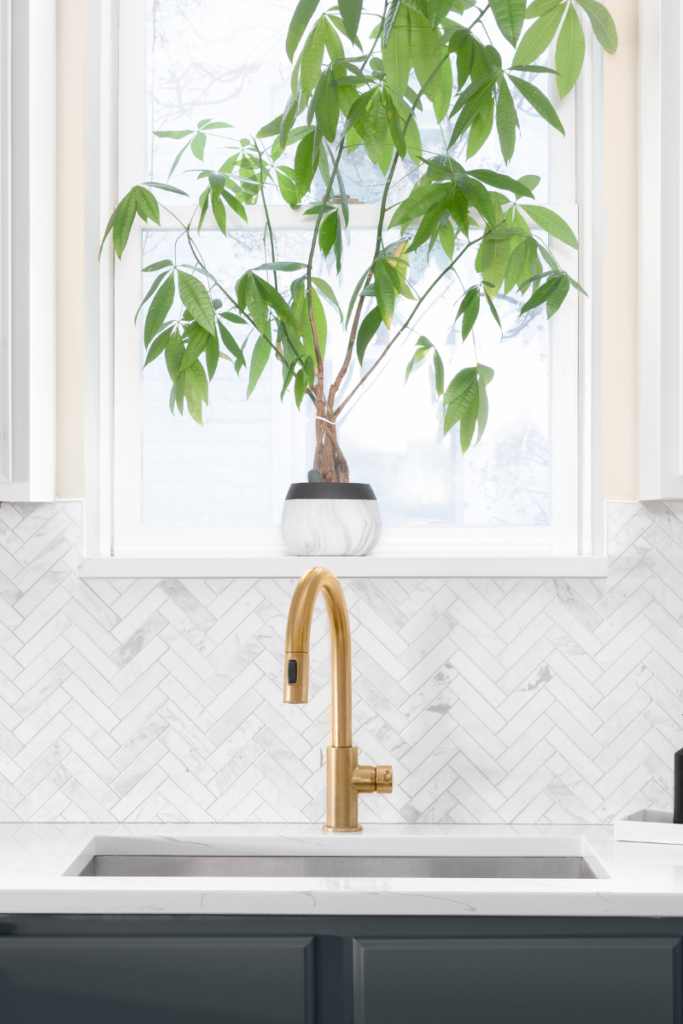
How to Clean Grout on a Kitchen Backsplash
Baking Soda and Vinegar Paste: Create a paste by mixing baking soda with water until it forms a thick consistency. Apply the paste directly to the grout lines, ensuring they are completely covered. Then, spray the grout lines with white vinegar. The mixture will fizz as the vinegar reacts with the baking soda. Allow the mixture to sit for about 10-15 minutes to penetrate the grout.
Scrub with a Toothbrush: After the baking soda and vinegar mixture has had time to work its magic, use a stiff-bristled toothbrush or a grout brush to scrub the grout lines vigorously. Focus on areas with heavy staining or buildup. The abrasive action of the brush, combined with the cleaning power of the baking soda and vinegar, will help lift dirt and grime from the grout.
Rinse with Water: Once you’ve scrubbed the grout lines, rinse the area thoroughly with clean water to remove any residue and leftover cleaning solution. You can use a damp sponge or cloth to wipe away the excess water.
Commercial Grout Cleaner: If the baking soda and vinegar method isn’t effective enough, you can try using a commercial grout cleaner specifically designed for removing stains and buildup from grout lines. Follow the manufacturer’s instructions carefully and test the cleaner on a small, inconspicuous area first to ensure it doesn’t cause damage or discoloration to the grout.
Steam Cleaning: Another effective method for cleaning grout lines is steam cleaning. Use a steam cleaner with a narrow nozzle attachment to direct steam directly onto the grout lines. The heat and pressure from the steam will help loosen dirt and grime, making it easier to remove with a brush or cloth.
Seal the Grout: Once the grout lines are clean and dry, consider applying a grout sealer to protect them from future stains and buildup. Grout sealers create a protective barrier that repels water, oil, and other liquids, helping to maintain the cleanliness of the grout lines over time.
By following these tips and techniques, you can effectively clean the grout in your kitchen backsplash and restore its appearance to like-new condition.

FAQs about Cleaning Kitchen Backsplash
Can I use bleach to clean my kitchen backsplash?
While bleach is effective at killing germs, it can be too harsh for some backsplash materials and may cause damage or discoloration. It’s best to use gentler cleaners that are safe for your specific backsplash material.
How often should I clean my kitchen backsplash?
It’s a good idea to wipe down your kitchen backsplash regularly, ideally after each cooking session to prevent grease and food splatters from accumulating.
What’s the best way to remove stubborn stains from a kitchen backsplash?
For stubborn stains, try using a paste made from baking soda and water. Apply the paste to the stain, let it sit for a few minutes, then gently scrub with a soft brush or cloth.

Tips for Cleaning Kitchen Backsplash
- Use a Grout Brush: For tiled backsplashes with grout lines, use a grout brush to effectively remove dirt and grime from between the tiles.
- Consider Sealing If you have a natural stone backsplash, consider applying a sealant to protect the surface from stains and moisture.
- Regular Maintenance: Incorporate wiping down your kitchen backsplash into your daily or weekly cleaning routine to prevent buildup and maintain its appearance.


[…] gently wipe the houseplants’ leaves. The soapy water not only cleans but also leaves a subtle shine. Remember, a little goes a long […]